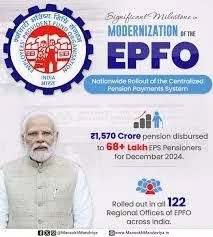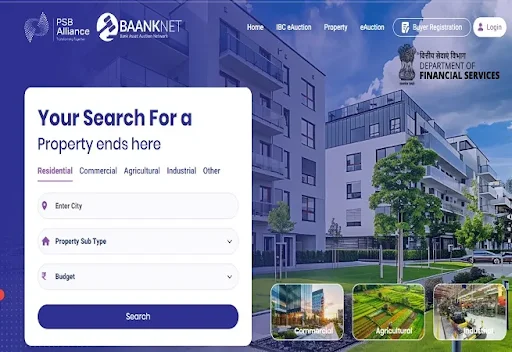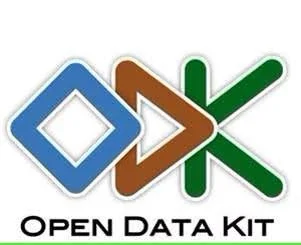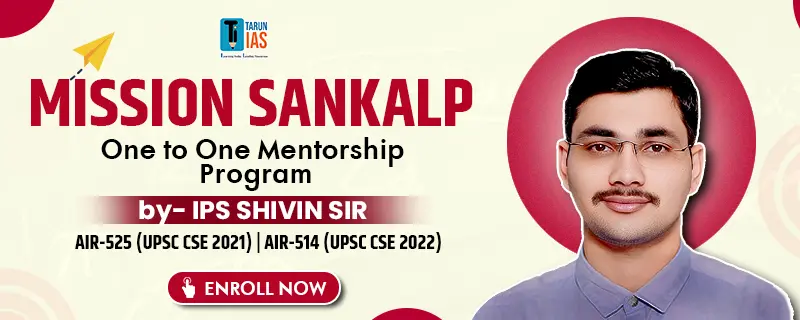UPSC GS 1
Jallikattu
- News: The first jallikattu of 2025 was recently held at Thatchankurichi village in the Gandharvakottai taluk of Pudukottai district with traditional fervour.
- Overview:
- Jallikattu is a traditional bull-taming sport originating from Tamil Nadu. It is also known by other names such as Sallikkattu, Eru Taḻuvuṭal, and Manju-virattu.
- In this event, a zebu bull, particularly breeds like Pulikulam or Kangayam, is released into a crowd.
- Participants attempt to grab the bull’s hump with both arms and hold on as long as possible while the bull tries to escape. In some cases, participants must also remove flags from the bull’s horns.

- Etymology:
- The term “sallikattu” is derived from two Tamil words: “salli,” meaning coins, and “kattu,” meaning package.
- This refers to a prize of coins tied to the bull’s horns that participants attempt to retrieve during the event.
- Location and Duration:
- Jallikattu is practiced primarily in Tamil Nadu.
- Season:
- The event is traditionally held in January, coinciding with the Pongal festival.
- Inception:
- Jallikattu dates back to the Sangam period, which spans from around the 6th to 1st century BCE.
- The sport began with the Ayar tribal people living in the Mullai region (a dense forest area) of Tamil Nadu.
- A cave painting discovered near Madurai, estimated to be around 1,500 years old, depicts a lone man attempting to control a bull, suggesting the long-standing history of the sport.
- SC Ruling:
-
- In 2023, the Supreme Court had upheld the amendments made by the legislatures of Tamil Nadu, Maharashtra, and Karnataka to The Prevention of Cruelty to Animals (PCA) Act, 1960, allowing bull-taming sports like jallikattu, kambala, and bullock-cart races.
Read also: Textile Industry in India – Overview & Importance for UPSC
UPSC GS 2
Centralized Pension Payments System
- News: In a landmark move towards enhancing pension services, EPFO completed full scale rollout of the new Centralized Pension Payments System (CPPS).
- Implementation and Accessibility: The Centralized Pension Payments System is implemented by the Employees’ Provident Fund Organisation (EPFO) to allow pensioners nationwide access to their pensions from any bank or branch.
- Purpose and Benefits: The system aims to simplify the pension disbursement process, eliminate physical verification requirements, and ensure seamless pension payments to over 7.85 million pensioners.
- Shift from Decentralization: It marks a significant change from the previous decentralised system, where EPFO’s zonal or regional offices had separate agreements with only 3-4 banks for pension disbursement.

- Key Features:
- Beneficiaries can withdraw pensions from any bank without visiting the branch for verification at the commencement of their pension.
- The pension amount is credited immediately upon release.
- The system eliminates the need for transferring Pension Payment Orders (PPOs) when pensioners relocate or switch banks or branches, ensuring uninterrupted pension payments across India.
- Key Facts about Employees’ Provident Fund Organisation (EPFO):
- The EPFO is a statutory body established under the Employees’ Provident Funds and Miscellaneous Act, 1952.
- It operates under the administrative jurisdiction of the Union Ministry of Labour and Employment.
- Governance Structure:
- The organisation is governed by a tripartite Central Board of Trustees, comprising representatives from the Government (Central and State), employers, and employees.
- The Union Minister of Labour and Employment serves as the Chairperson of the Central Board of Trustees.
- Schemes Administered by EPFO:
- Employees’ Provident Funds Scheme, 1952 (EPF): Focuses on savings for retirement.
- Employees’ Pension Scheme, 1995 (EPS): Provides pensions to employees post-retirement.
- Employees’ Deposit Linked Insurance Scheme, 1976 (EDLI): Offers life insurance benefits to employees.
- International Role: The EPFO serves as the nodal agency for implementing Bilateral Social Security Agreements with other countries, ensuring reciprocal benefits for workers.
- Coverage: The EPFO’s schemes cover both Indian workers and international workers from countries with bilateral agreements.
Baanknet Portal
- News: Secretary for the Department of Financial Services, Ministry of Finance, Mr. M. Nagaraju launched the revamped e-auction portal ‘Baanknet’ in Delhi recently.
- Purpose and Overview:
-
- Baanknet is an e-auction platform that centralizes information on all properties listed for e-auction by public sector banks (PSBs).
- The portal serves as a comprehensive resource for buyers and investors, providing access to a wide variety of properties.

- Property Listings:
- The portal features listings of residential properties such as flats, independent houses, and open plots.
- It also includes commercial properties, industrial lands and buildings, shops, vehicles, plant and machinery, and agricultural as well as non-agricultural lands.
- Features of Baanknet Portal:
- Integrated User Journey: The portal offers seamless navigation, covering the entire pre-auction, auction, and post-auction processes within a single application.
- Advanced Tools and Architecture: It is equipped with an automated and integrated payment gateway and KYC tools. Built on a microservices-based architecture, the portal allows third-party integration through an open application programming interface (API).
- Dashboard and Analytics: Users benefit from a dashboard feature that provides easy access to ‘Spend Analytics’ and various Management Information System (MIS) reports at the click of a button.
- Customer Support: A dedicated helpdesk and call centre, along with a callback request option, ensure comprehensive customer assistance.
- Simplified Process: By consolidating all property-related details, the portal simplifies the process of identifying and participating in property e-auctions, making it more convenient for buyers and investors.
- Benefits of Baanknet Portal:
- Enhanced Efficiency for PSBs: The portal aids public sector banks in recovering outstanding dues by streamlining the auction process, thereby improving their balance sheets.
- Credit Availability: By boosting the financial health of banks, the portal enhances their ability to extend credit to businesses and individuals.
- Extensive Property Database: Over 122,500 properties have already been migrated to the platform, providing a vast selection for prospective buyers and investors.
Project VISTAAR
- News: The Indian Institute of Technology (IIT) Madras has announced a collaboration with the Ministry of Agriculture and Farmer Welfare on Project VISTAAR.
- Overview:
- Project VISTAAR is a digital platform that consolidates information about start-ups in the agriculture and allied sectors.
- The platform aims to enhance the efficiency and effectiveness of the agricultural extension system by leveraging digitalisation.
- It enables farmers and stakeholders to easily access the expertise and services offered by start-ups in these sectors.
- Database Features:
- Contains comprehensive details of over 12,000 start-ups operating in agriculture and farming-related domains.
- Serves as a crucial resource for bridging the gap between farmers and relevant technological solutions.
- Significance:
- Enhanced Accessibility:
- Digitalisation of the agricultural extension system broadens its outreach, ensuring that every farmer can receive high-quality advisory services.
- Advisory services cover various aspects, including crop production, marketing, value addition, and supply chain management.
- Information on Government Schemes:
- Farmers gain access to detailed and actionable information on government initiatives related to agriculture, allied sectors, and rural development.
- This ensures they can fully benefit from these schemes.
- Improved Support:
- By providing timely, accurate, and contextual information, the digitalisation process strengthens the existing extension framework.
- It enables better support for farmers across agriculture and allied fields.
Open Data Kit (ODK) Platform
- News: The Comptroller and Auditor General (CAG) is using a new digital tool ‘Open Data Kit (ODK) platform’ to improve transparency and accountability in public spending.
- Overview:
-
- The Open Data Kit (ODK) is a digital platform used by the Comptroller and Auditor General (CAG) to securely collect and manage data.
- It plays a crucial role in enhancing transparency in public spending and ensuring accountability in government schemes.

- Features of the ODK Platform:
- Integration with OIOS: The platform is integrated with CAG’s own operating system, the OIOS (Open Information Operating System).
- End-to-End Encryption: ODK is a secure online portal that offers end-to-end encryption for data safety.
- Data Collection & Surveys: It is used for designing surveys, collecting information, and identifying areas that require further review or attention. ODK enables the launch of surveys in multiple languages simultaneously, making it more versatile.
- Benefits of the ODK Platform:
- Beneficiary Survey: Beneficiary surveys are an essential source of information for audit planning and gathering audit evidence.
- Use in Audits: The ODK toolkit has been deployed to assess patient satisfaction while auditing the performance of AIIMS in Mangalagiri (Guntur district) and Bibinagar (Hyderabad).
UPSC GS 3
Logistics Ease Across Different States (LEADS) 2024
- News: Union Minister of Commerce & Industry, Shri Piyush Goyal recently released the “Logistics Ease Across Different States (LEADS) 2024” report in New Delhi.
- Edition and Origin:
- The LEADS 2024 report marks its 6th edition.
- It was conceptualized in 2018 by the Department for Promotion of Industry and Internal Trade (DPIIT), under the Ministry of Commerce and Industry, drawing inspiration from the World Bank’s Logistics Performance Index.
- Evaluation Framework: The report assesses logistics performance across four critical pillars:
- Logistics Infrastructure
- Logistics Services
- Operating and Regulatory Environment
- Sustainable Logistics (newly added in this edition)
- Objective and Scope:
- It highlights the initiatives undertaken by various States and Union Territories (UTs) under the identified pillars.
- The report also emphasizes State/UT-specific opportunities to aid informed decision-making and improve logistics efficiency.
- Key Highlights of LEADS 2024:
- Coastal Group: Achievers: Gujarat, Karnataka, Maharashtra, Odisha, Tamil Nadu
- Fast Movers: Andhra Pradesh, Goa
- Aspirers: Kerala, West Bengal
- Landlocked Group:
- Achievers: Haryana, Telangana, Uttar Pradesh, Uttarakhand
- Fast Movers: Bihar, Himachal Pradesh, Madhya Pradesh, Punjab, Rajasthan
- Aspirers: Chhattisgarh, Jharkhand
- North-Eastern Group:
- Achievers: Assam, Arunachal Pradesh
- Fast Movers: Meghalaya, Mizoram, Nagaland, Sikkim, Tripura
- Aspirers: Manipur
- Union Territories:
- Achievers: Chandigarh, Delhi
- Fast Movers: Dadra and Nagar Haveli and Daman and Diu, Jammu and Kashmir, Lakshadweep, Puducherry
- Aspirers: Andaman and Nicobar Islands, Ladakh
Banded Royal Butterfly
- News: In a remarkable biodiversity discovery, Tripura has recorded its first-ever sighting of the rare Banded Royal butterfly (Rachana jalindra indra) in Sepahijala Wildlife Sanctuary.
- About Banded Royal Butterfly:
- Scientific Name: Rachana jalindra
- Family: Belongs to the Lycaenidae (blue butterfly) family.
- Habitat:
- Found in forests, particularly those in South and Southeast Asia, including the Western Ghats, Northeast India, Sri Lanka, Myanmar, Thailand, and Malaysia.
- Prefers dense vegetation and is often seen resting on leaves.

- Distribution and Subspecies: India is home to three subspecies:
- R. j. macantia – Found in southwest India to Goa.
- R. j. tarpina – Found in the Andaman Islands.
- R. j. indra – Found from Odisha to lower West Bengal and Bangladesh, with current records in Assam, Meghalaya, and Jharkhand.
- Appearance:
- Males exhibit a deep purple or bluish sheen with dark brown borders.
- Females are primarily brownish with white markings.
- Features a pale brown color with distinct white bands across the wings, lending it the “banded” appearance.
- Conservation Status: The species is legally protected under Schedule II of the Indian Wildlife (Protection) Act, 1972.
- Key Facts about Sepahijala Wildlife Sanctuary (SWL):
- Location: Situated in Tripura, approximately 25 kilometers from Agartala.
- Area: Covers around 18.53 square kilometers.
- Unique Features: The sanctuary is organized into five sections to house different types of animals:
- Carnivore Section
- Primate Section
- Ungulate Section
- Reptile Section
- Aviary Section
- Clouded Leopard National Park: Established in 2007, this park is part of Sepahijala Wildlife Sanctuary.
- Lakes: Contains two natural lakes: Abasarika and Amrit Sagar.
- Vegetation: Comprises moist deciduous forests.
- Flora: Encompasses over 456 plant species, including various types of bamboo, grasses, and medicinal plants.
- Fauna: Hosts diverse wildlife, including:
-
- Primates: Rhesus macaque, Pig-tailed macaque, Capped langur, Spectacled langur, and Slow loris.
- Other Animals: Leopard, Clouded leopard, Jungle fowl, Civets, Barking deer, Wild pig, and more.
- The sanctuary successfully revived the crab-eating mongoose, last observed in the 1930s.
Human Metapneumovirus (HMPV)
- News: China is experiencing a surge in respiratory illnesses, particularly Human Metapneumovirus (HMPV). This virus has several similarities to the Covid-19 virus.
- Nature of the Virus:
-
- HMPV is a respiratory virus responsible for mild infections resembling the common cold.
- It was first discovered by scientists in 2001 and belongs to the Pneumoviridae family, which also includes respiratory syncytial virus (RSV), measles, and mumps.

- Characteristics:
- Capable of causing infections in both the upper and lower respiratory tracts.
- Predominantly occurs during winter and early spring.
- Children, the elderly, and individuals with compromised immune systems are more prone to infection and associated complications.
- Signs and Symptoms: Resembles common cold symptoms, including cough, runny or blocked nose, sore throat, fever, and wheezing.
- Incubation Period: Typically ranges from 3 to 6 days.
- Recovery:
- Most individuals recover on their own within a few days with adequate rest and supportive care.
- In some cases, complications like bronchitis or pneumonia may develop, necessitating medical intervention.
- Transmission:
- Direct contact with an infected individual.
- Touching surfaces contaminated with the virus, such as doorknobs, phones, or keyboards, and then touching the mouth, nose, or eyes.
- Virus spreads through secretions from coughs or sneezes.
- Includes activities like shaking hands or hugging someone with the infection.
- Treatment:
- Current Status:
- No vaccine or specific antiviral treatment exists for HMPV.
- Antibiotics are ineffective as the infection is caused by a virus, not bacteria.
- Management:
-
- Symptoms are typically managed with over-the-counter medications for fever and pain.
- Decongestants may be used for relief.
BRICS Plus: Global Influence and Economic Collaboration | UPSC
Blue Baby Syndrome
- News: High nitrate levels have been found in groundwater of 440 districts across India, with 20% of the samples collected exceeding the permissible nitrate concentration.
- About Blue Baby Syndrome:
-
- Blue baby syndrome, also known as cyanosis, is a condition in which a baby’s skin appears blue or purple.
- The bluish coloration occurs due to insufficiently oxygenated blood.

- Causes of Blue Baby Syndrome:
- Oxygenation Issues:
- The condition arises when blood is not properly oxygenated, which affects the skin’s color.
- Normally, oxygen-rich blood flows from the lungs to the heart and is then circulated throughout the body.
- Any disruption in this process caused by problems in the heart, lungs, or blood can result in cyanosis.
- Congenital Heart Defects:
- Some congenital (present at birth) heart conditions can prevent proper oxygenation of blood.
- These defects may be caused by environmental or genetic factors.
- Acquired Methemoglobinemia:
- This more common form is caused by exposure to certain substances or health conditions.
- Contaminated water containing nitrates is a major contributor to the development of blue baby syndrome.
- Symptoms of Blue Baby Syndrome:
- The hallmark sign is bluish discoloration around the mouth, hands, and feet.
- Difficulty in breathing
- Vomiting and diarrhea
- Lethargy and increased salivation
- Loss of consciousness
- Seizures in severe cases
- Treatment for Blue Baby Syndrome:
- Condition-Based Approach: Treatment depends on the underlying cause of the condition.
- Congenital Heart Disease: Surgery may be required to address heart abnormalities that are preventing proper blood oxygenation.
- Severe Cases: A medication called methylene blue can be administered via injection to manage the condition effectively.

